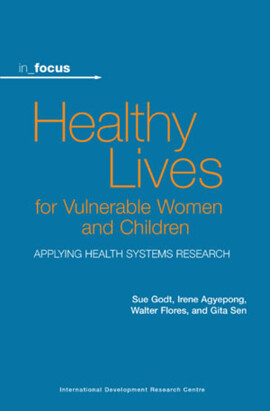
Grass Roots Injury Prevention
A guide for field workers
Diana Samarakkody, Elizabeth Davis, Rod McClure
Books about injury prevention tend to explain only the principles and leave it to the practitioner to apply them in the course of their everyday interactions. Thus there is a large gap, between “what works in principle” and “how to make it work in practice”. The purpose of this book is to translate the principles of injury prevention to the specific circumstances that community workers face.
The GRIP Guide contains eight modules. The first module gives an overview of the principles of injury prevention and safety promotion. Modules two through six describe how to address the five categories / types of injuries (burns, falls, drowning, transport injuries, poisoning). Module seven provides a generic approach that covers other unintentional injuries and module eight deals with the response to intentional injuries (violence).
This guide takes the form of a series of exercises that reader can use when working with community members to promote community participation and intersectoral collaboration as a means of achieving a safe environment.
Published: 2013
Pages: 200
eBook: 9781780448022
Paperback: 9781853398032
Hardback: 9781853398025
The GRIP Guide contains eight modules. The first module gives an overview of the principles of injury prevention and safety promotion. Modules two through six describe how to address the five categories / types of injuries (burns, falls, drowning, transport injuries, poisoning). Module seven provides a generic approach that covers other unintentional injuries and module eight deals with the response to intentional injuries (violence).
This guide takes the form of a series of exercises that reader can use when working with community members to promote community participation and intersectoral collaboration as a means of achieving a safe environment.
| Prelims (Authors and Contributors/ Authors/ Contributors/ Preface/ Acknowledgements) | |||
|---|---|---|---|
| Chapter 1 Introduction | |||
| Making The GRIP Guide work for you | |||
| Adapting the exercises to local settings | |||
| How to form a group | |||
| Training techniques used in The GRIP Guide | |||
| Learning materials | |||
| The learning environment | |||
| Ethical issues | |||
| Chapter 2 Grasping the problem | |||
| Risk factor identification | |||
| Intervention development and implementation | |||
| Progress monitoring | |||
| Module 1: Burns | |||
| Grasping the problem | |||
| Risk factor identification | |||
| Intervention development and implementation | |||
| Progress monitoring | |||
| Module 2: Falls | |||
| Grasping the problem | |||
| Risk factor identification | |||
| Intervention development and implementation | |||
| Progress monitoring | |||
| Module 3: Drowning | |||
| Grasping the problem | |||
| Risk factor identification | |||
| Intervention development and implementation | |||
| Progress monitoring | |||
| Module 4: Transport injuries | |||
| Grasping the problem | |||
| Risk factor identification | |||
| Intervention development and implementation | |||
| Progress monitoring | |||
| Module 5: Poisoning | |||
| Grasping the problem | |||
| Risk factor identification | |||
| Intervention development and implementation | |||
| Progress monitoring | |||
| Module 6: Violence | |||
| Grasping the problem | |||
| Risk factor identification | |||
| Intervention development and implementation | |||
| Progress monitoring | |||
| Module 7: Other injuries | |||
| Grasping the problem | |||
| Risk factor identification | |||
| Intervention development and implementation | |||
| Progress monitoring | |||
| Concluding words | |||
| Bibliography |
Diana Samarakkody
Diana Samarakkody is with the National Program Manager for Injury Prevention & Control, Non Communicable Disease Unit, Ministry of Health, Sri Lanka.
Elizabeth Davis
Elizabeth Davis is a Research Officer with Injury Prevention and Control (Australia) Ltd. and has more than 20 years’ experience in health promotion, health policy, and programme evaluation.
Rod McClure
Professor Rod McClure is Director of the Monash Injury Research Institute





